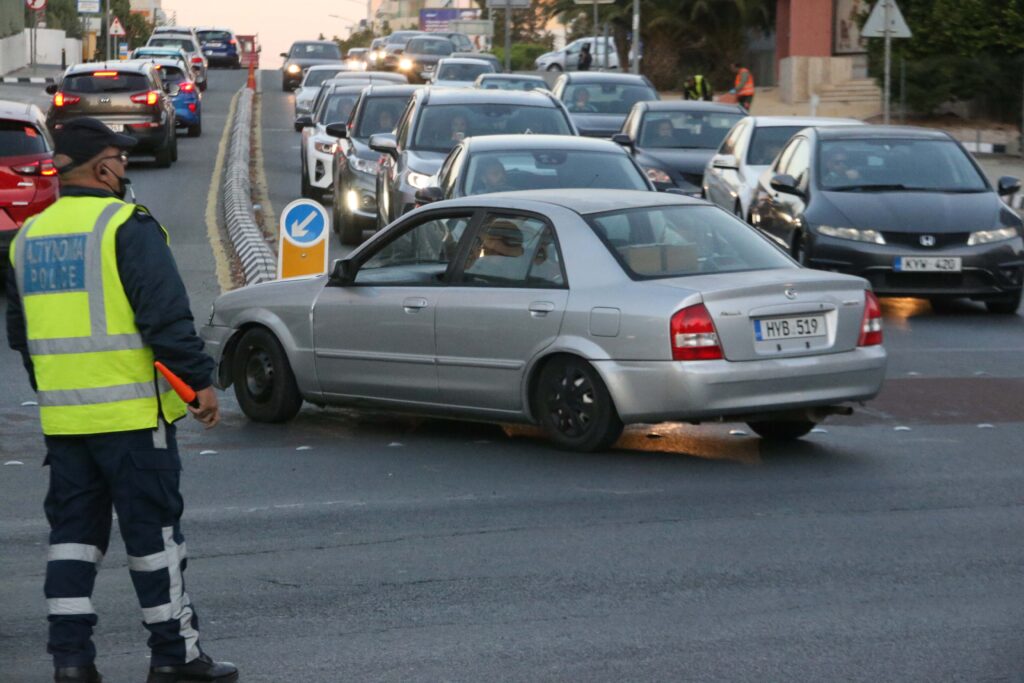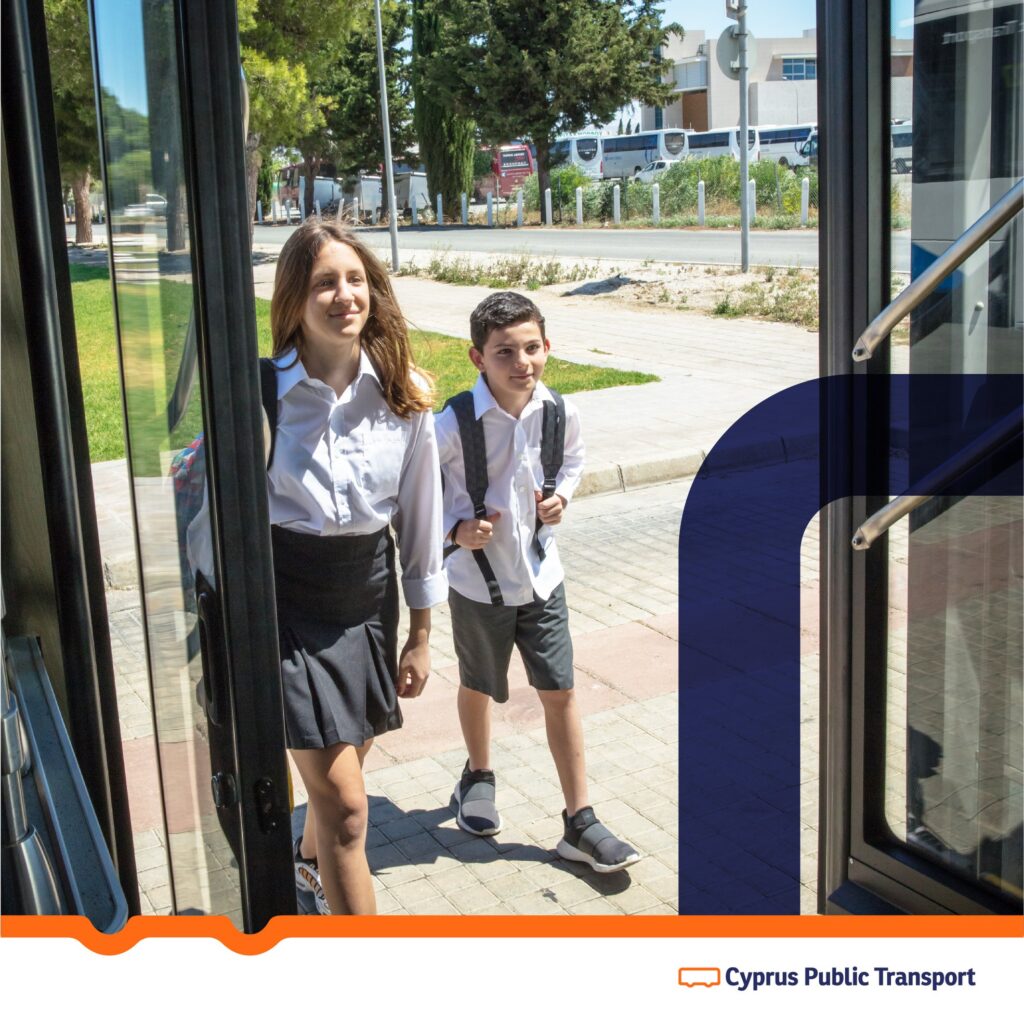To increase the three per cent using public transport we need expanded routes and park and ride schemes, better connectivity and more bus lanes
By Antigoni Pitta
Urban mobility in Cyprus might be better described as urban immobility as the continued dependence on private vehicles, combined with paltry use of public transport, causes relentless traffic congestion in city centres and greenhouse gas emissions which are double the European average.
Improved sustainable mobility plans are on the cards as part of the EU-funded national Recovery and Resilience plan (RRP), but the list of what’s necessary is long and daunting: hugely expanded park and rides schemes, better bus routes and more frequent bus services to support them, an expanded school bus system and far more bus lanes.
A recent Eurostat study showed that with 645 cars per 1000 inhabitants in Europe, Cyprus had the third highest rate of cars, which according to the RRP proposal, amount to 25 per cent of total greenhouse gas emissions for the country. At the same time buses, our only available mode of public transport, remain unpopular, with recent figures showing that only three per cent of trips in Nicosia take place by public transport.
The Cyprus Mail asked people who live in Limassol and Nicosia, the cities where the traffic problem is the most acute, to share their experiences with using buses. Even though bus services are managed by different operators in the two cities – Emel in Limassol and Cyprus Public Transport (CPT) in Nicosia – the response was similarly lukewarm.
In the case of Nicosia, almost all complained about unreliable service, especially away from the centre, and confusing connections. “It takes ages because of the routes,” said Danielle, a 27-year-old from Nicosia. “To go anywhere I need to go from my house to the centre and then back out.” Switching routes often requires the Nicosia bus rider to go all the way to the main terminal at Solomos square downtown, get off the bus and board another.
Interviewees from Limassol had similar views, saying buses are hardly ever on time. “I wouldn’t use a bus since I have the flexibility of using my car,” said 32-year-old Michael. He added however that his employer offers a bus service to employees that live in different cities so that they don’t have to drive to work. Christos, also a Limassol resident, said he was deterred from using buses because there is no real time access to routes and timetables, which makes it inconvenient.
Dr Loukas Demetriou, assistant professor at the department of civil and environmental engineering at the University of Cyprus, believes that it’s more a case of insufficient infrastructure.
“It’s not really the case that Cypriots hate using the bus, it’s more that the existing system is just hard to navigate,” he told the Cyprus Mail. “It’s getting better but it’s not exemplary. It doesn’t effectively serve the public, which might explain why we are at three per cent.”
Both cities face huge queues and hours of congestion in their centres and entry points, especially during rush hour in mornings and afternoons. Demetriou says this is simply because there are no other options. “The demand for these trips can only be served by private cars,” and there are specific areas where this happens every day, like the entrance to Nicosia on Limassol avenue, or the Ayia Phyla roundabout in Limassol.
“A first step would be to implement park and ride stations; this way we’ll keep cars out of the city and replace them with buses, which will move people quickly and easily.”
Park and ride is a fairly new concept for Cyprus, but the public works department is working on implementing it islandwide in the next year. This will allow commuters to park their car at designated areas and ride the bus into town. Demetriou also said that this will better address the needs of our expanding cities and new residential areas formed in recent years. Evi Anayiotou, head engineer for sustainable mobility projects at the public works department, told the Cyprus Mail that plans are underway to gradually introduce park and ride facilities in all cities, starting with Limassol.
The existing facility that was introduced by Emel in collaboration with Limassol municipality earlier this year in the city centre will be expanded and joined by two others in Ayios Tychonas and Kato Polemidia. The department is in consultation to secure land for more spots around the island, but these are largely under wraps at the moment.
In Nicosia, more spots will join the existing CPT-run park and ride service in Alambra, which will be expanded with additional facilities, including charging ports for electric cars. The Alambra facility connects Dali and the surrounding villages to the centre of town, but CPT’S business development manager Alexander Kamberos says that apart from serving these areas, the facility could also serve passengers coming from other cities by car.
“They could leave their cars at the park and ride and use the bus to go to the centre of the city, and at the end of their day drive back to their town without having to endure the city traffic and at the same time not be a part of the traffic.”
Asked about the Solomos Square conundrum, Anayiotou said there are talks to expand the network so that people can switch routes at more stations, not just a central one. Emel CEO George Kyriacou said that even though Limassol’s central bus terminal in Chavouza isn’t facing the same problem, there are plans to improve both its connectivity and its facilities. In addition, a park and ride user would only need a single ticket to use both the service and any subsequent buses.
“In general, we want people to approach alternative modes of transport with a positive attitude and leave their cars,” Anayiotou said, adding that the transport ministry is hoping to dispel the idea that buses are only for foreigners or those with lower incomes. “Buses should be for everyone.”
Congestion is also worsened by school runs, an issue which is being addressed through school bus programmes from both Emel and CPT.
“We have a robust network of buses serving schools at the moment,” with the possibility of expanding it to cover a wider network, Kamberos said. CPT, which runs school buses in Larnaca and Nicosia, moves approximately 9,000 students daily, removing about 10,350 car trips just in those two districts, he said. It has also updated the system so parents can top up their card through the app and even know if their child arrived at the school and track the bus.
“If all students attending school in the morning did so by bus at a minimum, we would remove one car per 1.2 students on average off the roads in the morning, thus reducing a great volume of the congestion which runs parallel with government employees and private sector employees going to work.”
This way, the former would avoid the school run traffic while the latter would be able to leave home a little later, Kamberos said. “This would be a quick win situation that can help alleviate the traffic issue without making any drastic changes from the ministry’s side, apart from communicating that there is a safe and reliable way to get the children to school in the morning.”
Kamberos said that close to 30,000 bus users were recorded in Nicosia alone.
“I would say the culture is slowly changing towards bus usage but [bus operators] can only offer a solution to 90 per cent of the situation,” he said, explaining that it can be hard to convince the public to use a bus if it’s going to be stuck in traffic with other cars, no matter how comfortable it is or how many amenities it can offer.
“Wider Limassol has no traces of bus lanes, nor traffic lights giving buses priority,” Kyriacou said. “On the contrary, bus stops and shoulders are not appropriate for stopping, and the traffic often leads people who might have tried the bus back to their cars.” Demetriou agreed, saying that an effective solution should be twofold – discouraging car use while also facilitating an environment that will encourage using other options. Effectively, we can’t have one without the other.
“For example, if a bus can move 25 to 30 people, that means that just as many cars will be kept off the streets. To this end, we need to give buses priority, and bus lanes are a good idea,” he said. However, he added, this can only happen after we’ve successfully implemented more efficient public transport services, and a park and ride service.
Through generous funding as part of its mobility plans, the EU is forcing member states to think beyond cars while implementing actions that will focus on collectively reducing emissions by 90 per cent in the next decade.
And even though Cyprus has put forth a few plans, the problem is that they haven’t been taken seriously yet, Demetriou said.
“We expect so much of them, but so little is being done. We haven’t seen any tangible changes, they are just on paper – and to me the solutions offered seem very conservative for our needs, like they’re holding back.”
What we need, he said, is to think bigger and bolder, and use technology to our advantage. “If we give the public a new ecosystem that will encourage them to use alternatives to their own cars – like bicycles, scooters, and even just plain walking – I’m sure they will be happy to.”










Click here to change your cookie preferences